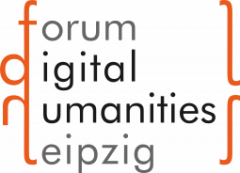Beethovenstraße 6
04107 Leipzig
Öffentliche Vorlesung
Veranstaltet im Rahmen der Europäischen Sommeruniversität in Digitalen Geisteswissenschaften „Kulturen & Technologien“
Ort: Bibliotheca Albertina, Vortragssaal
Adresse: Beethovenstraße 6, 04107 Leipzig
______________________
When we apply computers to humanistic questions, we rely, in some sense, on what might be called digital reason. In his great critiques of pure reason, practical reason, and judgement, Immanuel Kant argues that the objects we perceive necessarily match the a priori forms of our experience and necessarily accord with the predetermined concepts of our understanding (the categories). Does digital reason have similarly inescapable a priori forms of perception and cognition? Are there digital analogues to the a priori forms space and time? Are they inescapable or can we somehow work around the a priori forms?
The powers and the limits of digital reason follow from two observations: digital reason can take into account anything and only things which we can represent digitally. And digital reason can only reason its way to (or: calculate) results which are accessible to the basic operations accessible to the underlying logic of the computing machine and which can be calculated in a manageable amount of time.
From these observations, a number of questions follow. What are the nature and consequences of the analog/digital distinction? What is the nature of space and time in computational contexts? What limits are inherent in digital representations of information and what constraints do they place on the interpretation of data? What consequences ensue when limits are not observed? How does it happen that logical implications of our premises can surprise and can appear to provide new information? And what implications does digital reason have for human autonomy and responsibility?
________________
C. M. Sperberg-McQueen is the founder of Black Mesa Technologies LLC and a consultant specializing in the use of descriptive markup to help scholars, memory institutions, and governments make scientific, public, and cultural heritage information more useful in the short run and preserve it for the long haul. He has served as co-editor of the XML 1.0 specification, the Guidelines of the Text Encoding Initiative, and the XML Schema Definition Language (XSDL) 1.1 specification.
He has a Ph.D. in comparative literature but strayed into computing and digital humanities as a graduate student and never came back out.
_________________
